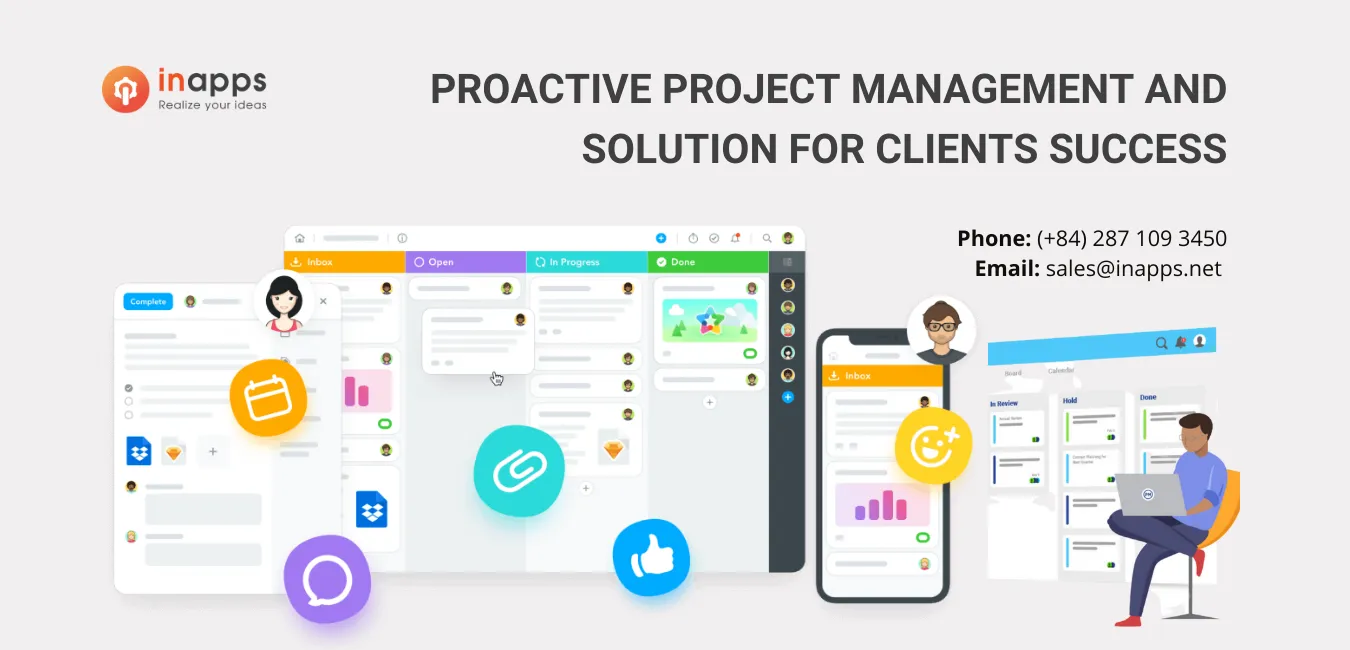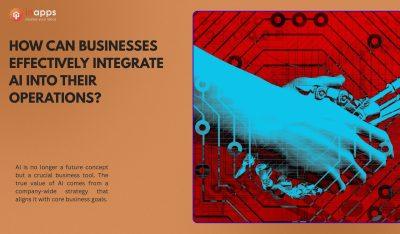- Home
- >
- Offshore News
- >
- How To Implement Proactive Project Management To Drive Success
Project management can be difficult, but Proactive Project Management can make it easier. In this blog post, we will discuss what proactive project management means and how to get started. InApps’ Automation Management solution makes sure that every step of the process is taken care of for you, from scheduling to monitoring progress through completion. Now we can take control of the projects and deliver results before deadlines to focus on what matters most – clients’ success.
1. What is Proactive Project Management, and why does it matter?
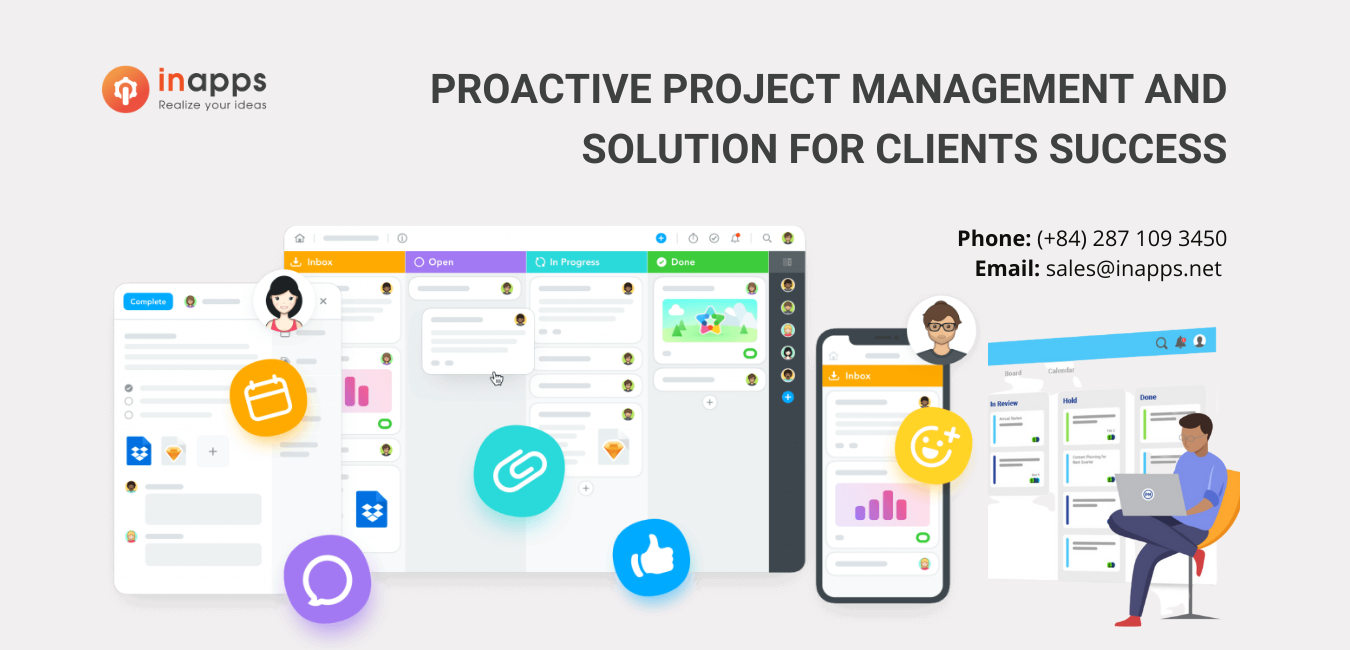
There were numerous problems at the start of the project, such as:
- The client representatives canceled too many meetings.
- Client responses to emails were either late or required too many reminders.
- Many assignments were left unfinished because client explanations did not arrive on time, resulting in idle time among team members.
Before you know it, the project has fallen behind schedule, and team members are dissatisfied because they are unclear about what to do. The project manager must then go into “firefighting mode” to bring things back on track. As a result, there is tension and conflict. This is reactive project management, which is not a good way to handle projects. This is where Proactive management comes in – which is a better way to approach.
1.1 Proactive Project Management definition
Proactive project management is the practice of systematically ensuring that the team has a clear plan of action, milestones, timeline, etc., and can adapt to changes. It also includes identifying solutions for risks/issues before they occur.
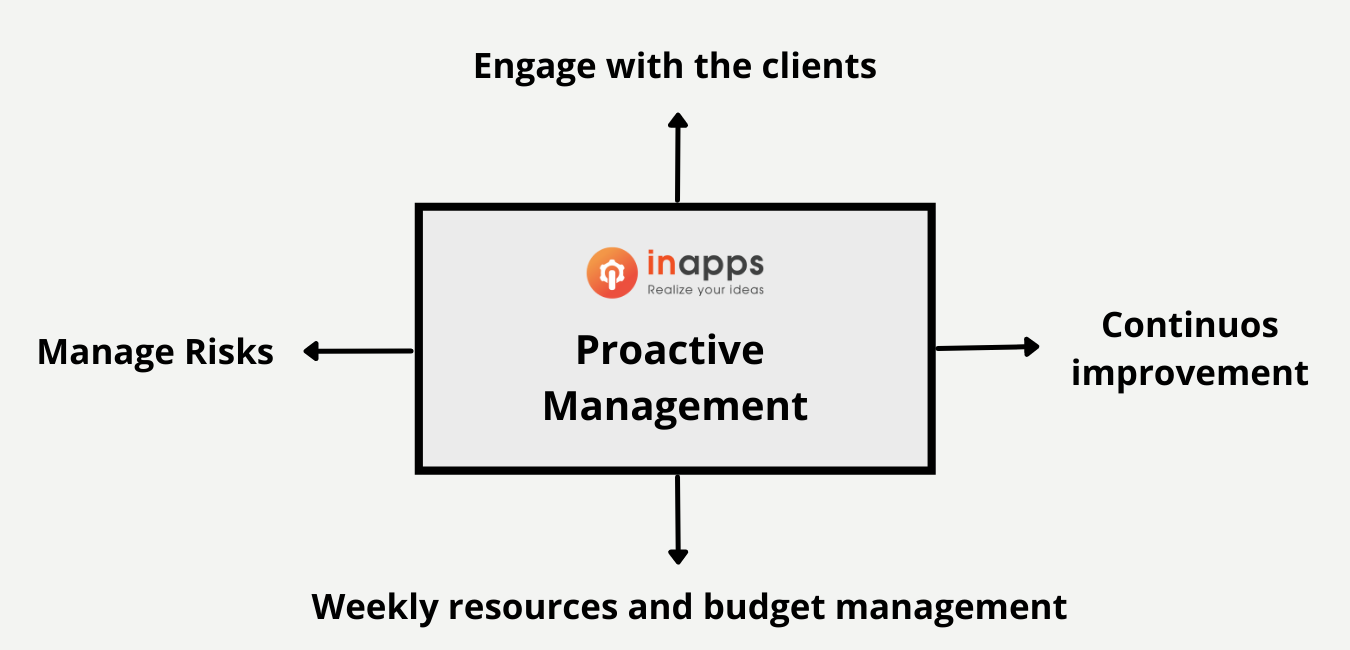
Here are signs of proactive management:
- You are concentrating your energy and attention on the long-term needs rather than being continually in the present moment.
- Collaborate effectively with your teams and are aware of their strengths and flaws.
- You continually assess project risks and keep key stakeholders and the team informed of any changes.
- You conduct frequent project reviews, solicit input, and look for ways to improve procedures.
1.2 The importance of Proactive Project Management
Proactive Project Management ensures that you are always on top of your project’s needs and goals because you’re taking the lead in managing them proactively. It keeps projects moving forward by anticipating potential obstacles to be avoided or dealt with before they snowball out of control into much more significant issues.

With proactive project management, we gain control of time, we have more time to prepare ahead and anticipate issues. We identify which activities and duties are crucial to prioritize work and assign authority to improve procedures, productivity, and operational efficiency.
We must comprehensively analyze the processes, including a study of the information and communication flow, the potential of employing technology to increase effectiveness and efficiency, the identification of red tape, and the duplication of handling tasks.
Furthermore, we may be faced with risk analysis, risk identification, and risk prioritization.
As you can see, proactive management is the rule of the day. You must do tomorrow’s duties today and accomplish more with less. Anticipating challenges and hazards and having a plan to handle or prevent them will assist you in effectively completing tasks.
2. Proactive Project Management Solutions for Software Development
Issues are unavoidable. They’re a part of managing any project. That’s why InApps create a solution to solve all the challenges – an automation project management ecosystem.
Let see a template project management of how InApps apply automation management.
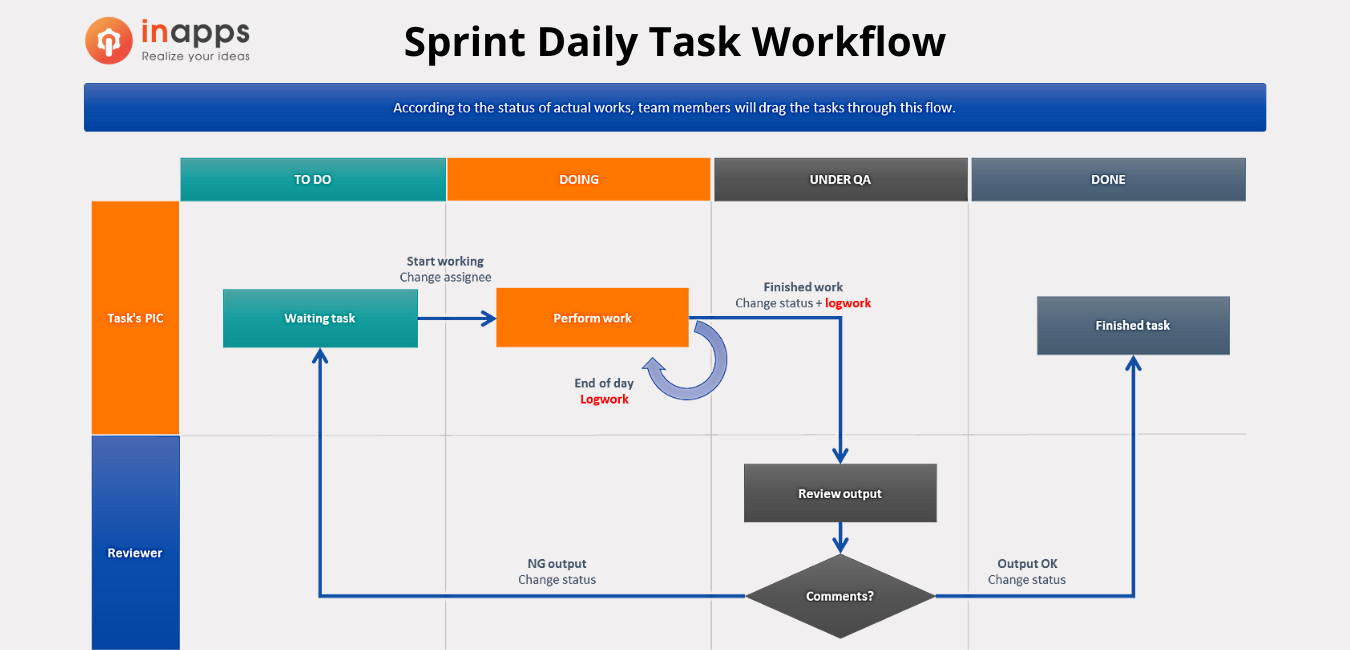
2.1 Development Methodology
We apply Scrumban methodology for project management – an excellent solution for teams who need the structure of Scrum with the flexibility of a flow-based method or for teams who are looking to transition from Scrum to Kanban.
2.1.1 What is Scrumban?
Scrumban is an Agile development methodology that is a hybrid of Scrum and Kanban.
Scrumban emerged to meet the needs of teams wanting to minimize the batching of work and adopt a pull-based system. A hybrid of Scrum and Kanban gives teams the flexibility to adapt and change to stakeholder and production needs without feeling overburdened by their project methodology. Scrumban provides the structure of Scrum with the flexibility and visualization of Kanban, making it a highly versatile approach to workflow management.
2.1.2 How Scrumban = Scrum + Kanban
Scrumban combines the structure of Scrum with the flow-based methods of Kanban. Here are the elements of Scrum that are incorporated into the Scrumban method:
- Iteration planning at regular intervals, synchronized with reviews and retrospectives
- Decide how much work they can pull into the sprint based on the complexity of the work and the length of the sprint
- Prioritization on-demand provides the team with the best thing to work on next — no more or less
- Assure necessary level of analysis before starting development (Definition of Ready)
- Use the “ready” queue (between Backlog and Doing) to organize
2.1.3 The elements of Kanban that are used by Scrumban teams:
- Pull system and continuous workflow: Pull items into Doing as the team has capacity
- WIP limits: Explicit limits on how many items are in progress at any time
- Individual roles not clearly specified
- Short lead times — emphasize just-in-time analysis and planning (rather than batch-processing for iteration planning estimations)
- Use process buffers and flow diagrams to expose process weaknesses and identify opportunities for improvement
- Focus more on cycle time than burndown (if cycle time is predictable, burndown is predictable)
- Use policies to make process step transitions clearer
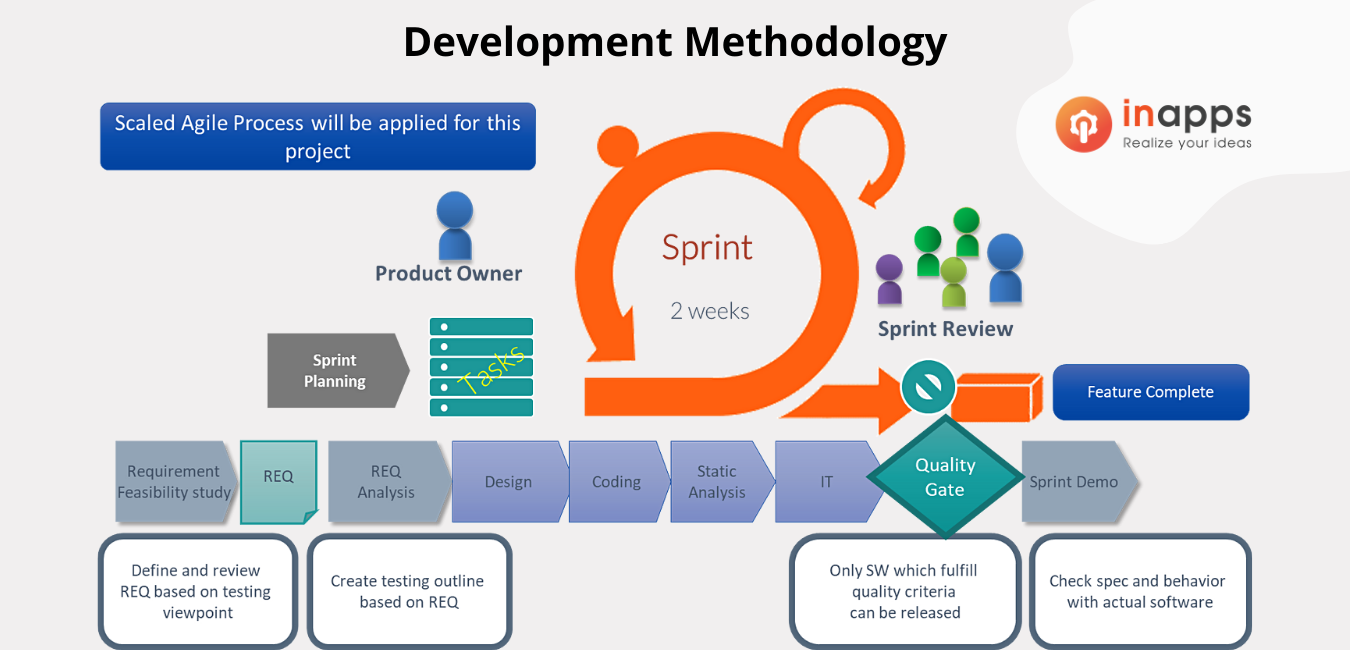
InApps’ Development Method
2.2 Development Process
We always have a clear project roadmap to ensure the project KPI
- Productivity: 100% achieve Story Point Commitment
- Quality: Zero critical bug/Sprint Demo
- Timeline: 100% Sprint Release on time
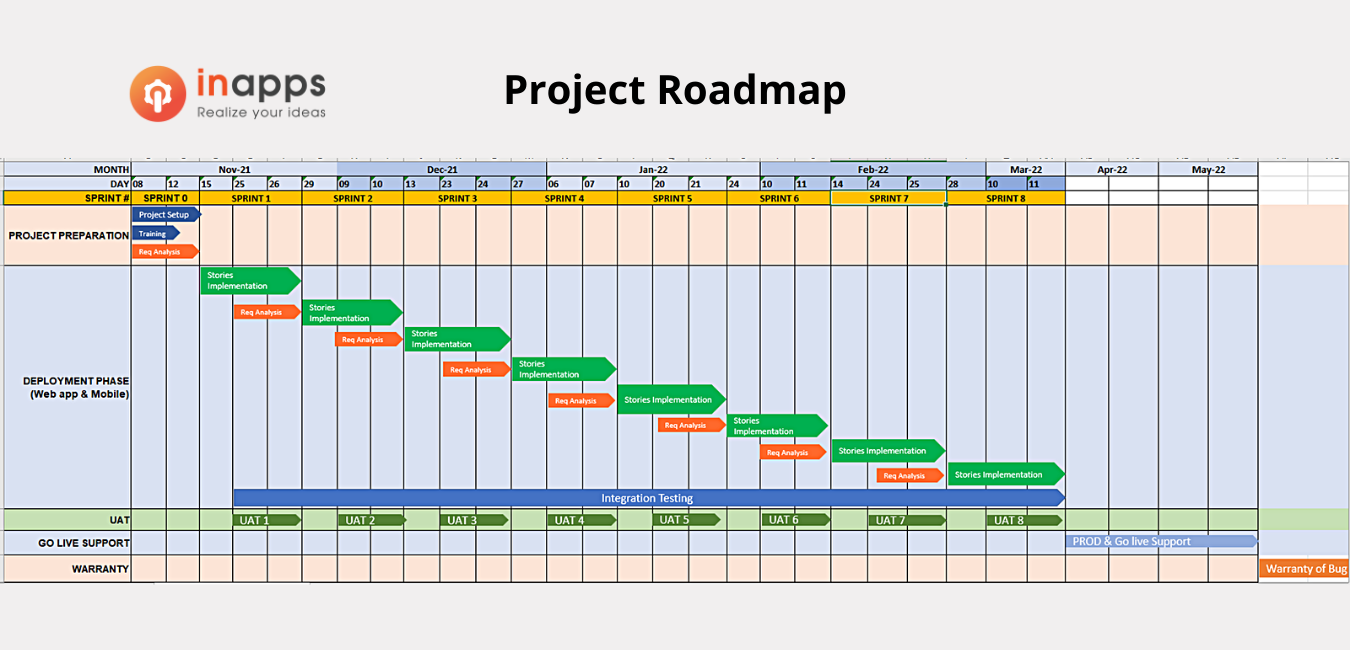
2.2.1 Sprint Concept
We divide the overall project duration into several 2-weeks sprints. Schedule the development phases to match with the sprint’s duration. In each sprint, the project team will select a set of requirements to implement. And the output of the sprint is incremental of the product’s features.
This process allows customers to quickly and flexibly adjust the requirement between each sprint and evaluate the product earlier.
2.2.2 Sprint Daily Task Workflow
According to the status of actual works, team members will drag the tasks through this flow.
2.2.3 Bug Fixing Workflow
- Register Defects in Detail.
- Assign Proper PIC for Analysis.
- Analyzing / Studying Defect by PIC.
- Found Root Cause / Countermeasures.
- Applied Countermeasures. Released apk.
- Verified Countermeasures.
2.2.4 Log Work
Log work is the MOST IMPORTANT activity. It’s not only logging the spent efforts but also re-estimating the size of the remaining work.
This activity will provide data for calculating progress, spent efforts, remaining efforts, charts….
2.2.5 Change Management
All service or component changes must be raised using a request for change (RFC) and approved before implementation. The back-out plan must be clearly validated before implementing change.
2.2.6 Engineering Processes
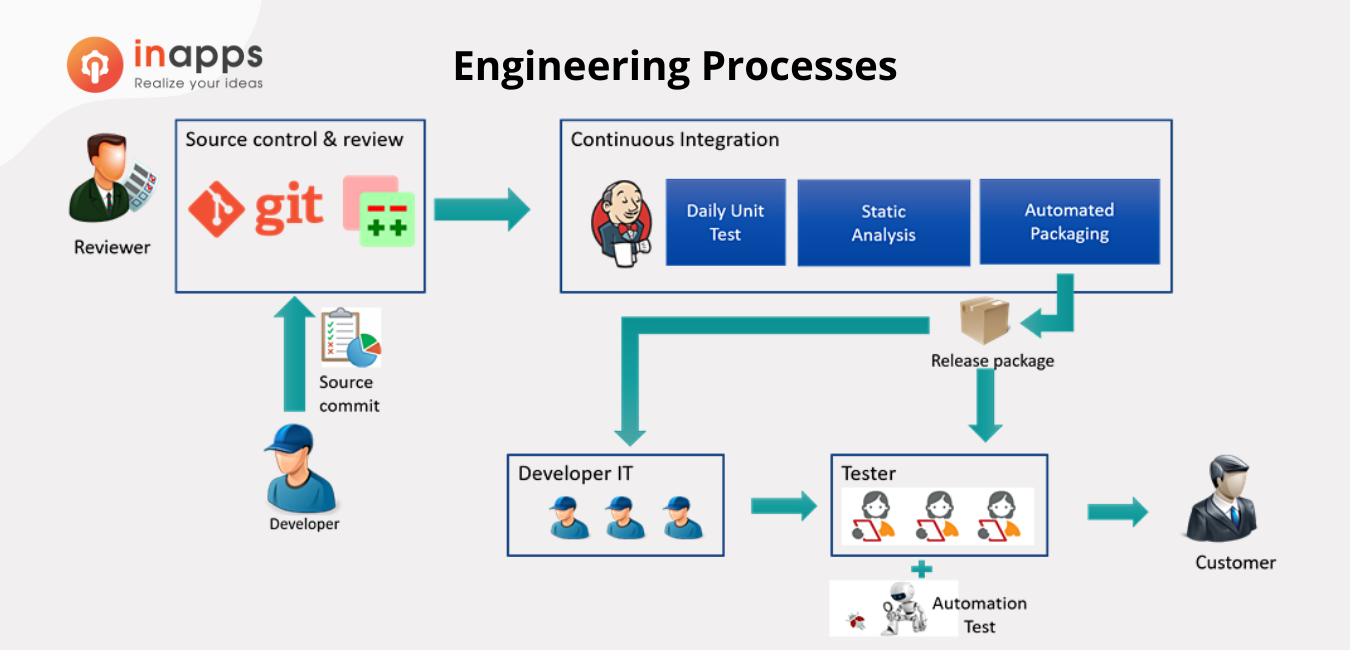
InApps’ Engineering Processes
2.2.6 Code Review Process
Improve the quality of every commit by the different review processes. We use the Bitbucket tool for Developer-Reviewer collaboration.
If you need assistance with your projects and are looking for a better way to manage your tasks and teams, CONTACT US for more details and consultation.
2.3 Project Management Tools
We use the latest and most popular tools, such as Confluence, Jira, bee task, etc., for the project to run smoothly and efficiently.
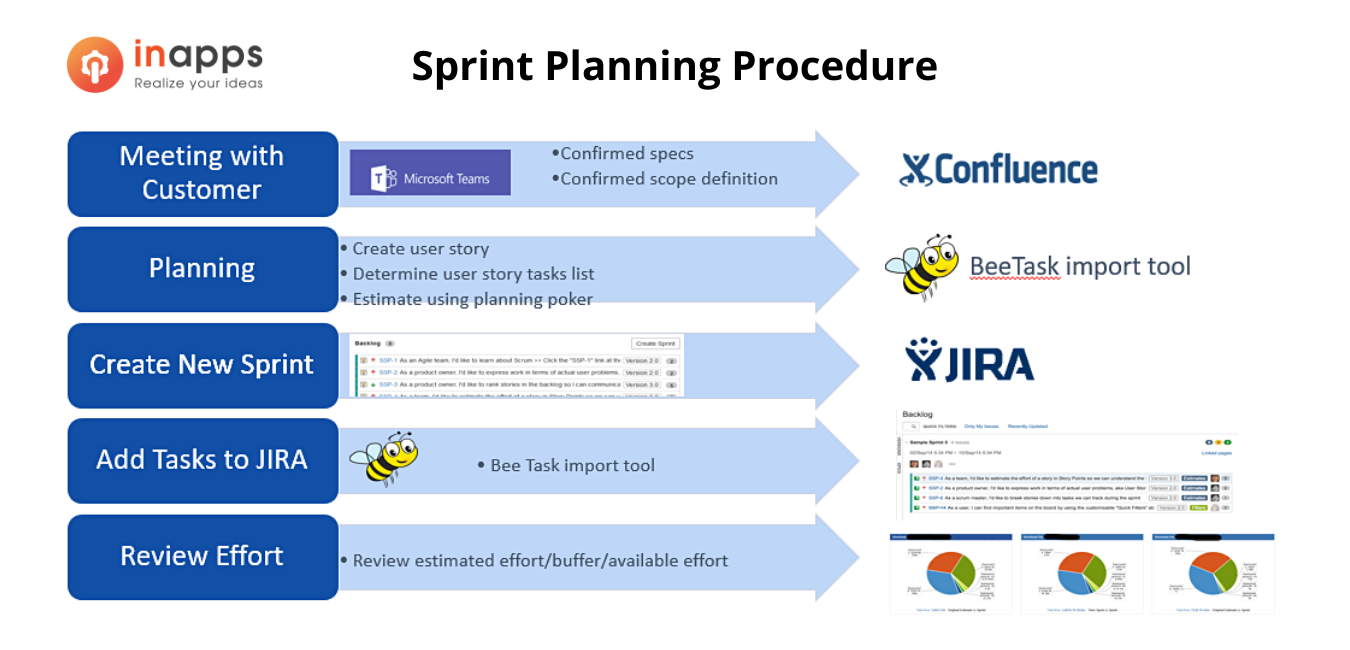
Tools we use in Sprint planning procedure
3. Bring your project to the next level with InApps
Let’s create the next big thing together!
We are InApps, a top IT leading company, who always find the best solutions to “Realize your ideas” and always be a reliable long-term companion.
InApps Technology is more than a software development company. It is a dream of Vietnamese developers. Our passion for technology inspired us to start InApps with the desire of helping Startups and SMEs successfully utilize technology to growth hack their business.
At InApps Technology, our team of highly skilled developers focuses on crafting projects tailored to your business needs. Our clients love that they can benefit from our outsourcing software development services and offshore development center at the same time. We never stop driving your business forward from mobile app development, web development, fantastic UI/UX design, software QA & QC, and more.
Let’s create the next big thing together!
Coming together is a beginning. Keeping together is progress. Working together is success.




